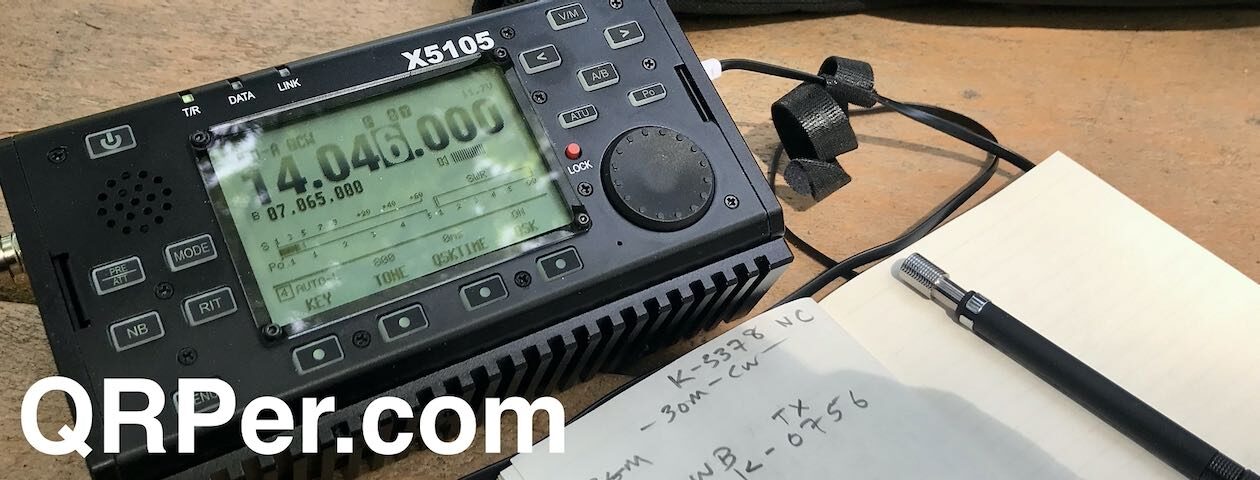As always there are lots of links within the article. Click one! Click them all! Learn all the things! ?
by Vince (VE6LK)
In August and September 2024 I was travelling around Southern Ontario for some family matters and naturally I brought my radio kit with me to squeeze in some radio therapy stops along the way. This is the report of my stop at Hamilton Waterworks National Historic Site (CA-5365).
It was a rainy Friday morning as I departed at 0730h to get in some radio therapy before getting to the fishing store and getting some more of the Fishing Butler bungee straps I’d picked up a week prior. And, as it happens, Fishing World in Hamilton was pretty much around the corner from CA-5365. I’d chosen this site as it had never been activated in CW.
The Hamilton Waterworks National Historic Site is “…a gracious complex of mid 19th-century brick industrial buildings…” located in the North-East end of Hamilton near Lake Ontario. It is part of Hamilton’s original water works complex which sprawls along Woodward Avenue.
And it is delightfully radio quiet, however the noise from the local street was the real challenge for me. Next time I’ll use earbuds.

This is one site I drove to without much research and I was prepared with a backup site were I not able to activate it for whatever reason. Thus I was pleasantly surprised when I saw a large covered area with picnic tables and a small grass area outside to stake down my Carbon Fibre mast. Hoisting/throwing the wire turned out to be a challenge given the shape of the giant support timbers (rounded) as the wire would fall into the narrow end of the crevice, so with some creative use of the CF mast, I was able to essentially fish it into place. Later removal was the reverse process for the same reason.

I checked the solar conditions and it showed low K and moderate A indicies, and then I verified with a spin of the VFO to see what I could hear. I set my power at 5W and began the activation on 20m. Being located in Ontario, I hear a different set of regular callers than I may otherwise when at home in Alberta. Still a fair number of callsigns are immediately recognizable and they put a smile on my face.
I had planned this to be a CW only activation to exercise my brain. I worked my way from 20m to 40m then to 30m. I was surprised with the short distances on 30m working a couple of stations in Ontario that were less than 75 miles away.
After catching 30 in the log my time was up and the rain had started -along with nearby thunder- so I hastily disconnected the coax and took down my antenna and got on with my day.
List of gear used for these activations:
Note: All Amazon links are affiliate links that support QRPer.com at no cost to you.
- Elecraft KX3
- Charmast 100W battery
- Palm Pico Paddle
- 35′ RG-174 feedline with a FT-140-43 toroid at one end
- Spark Plug Gear EFHW Transformer paired with N7KOM Microlight Traps
- Chameleon wire winders
- Spark Plug gear wire winders
- Leadsound 3W portable speaker
- 7.1m carbon fibre “crappie” fishing rod
- 3pc fishing rod holder as a mast bottom support
- Bass Pro Shops Extreme tackle bag 3600 size
Summary
It was wonderful to spend time among such elegant buildings that have stood there for 167 years. The park is a peaceful place in an otherwise industrial end of an industrial city and is a delight to visit. I hope to do so again soon.
72 and dit dit,
…Vince
First introduced to the magic of radio by a family member in 1969, Vince has been active in the hobby since 2002. He is an Accredited examiner in Canada and the USA, operates on almost all of the modes, and is continually working on making his CW proficiency suck less. He participates in public service events around Western Canada and is active on the air while glamping, mobile, at home or doing a POTA activation. You can hear him on the Ham Radio Workbench podcast, follow him on Twitter @VE6LK, check out his YouTube channel, and view the projects and articles on his website.
















































